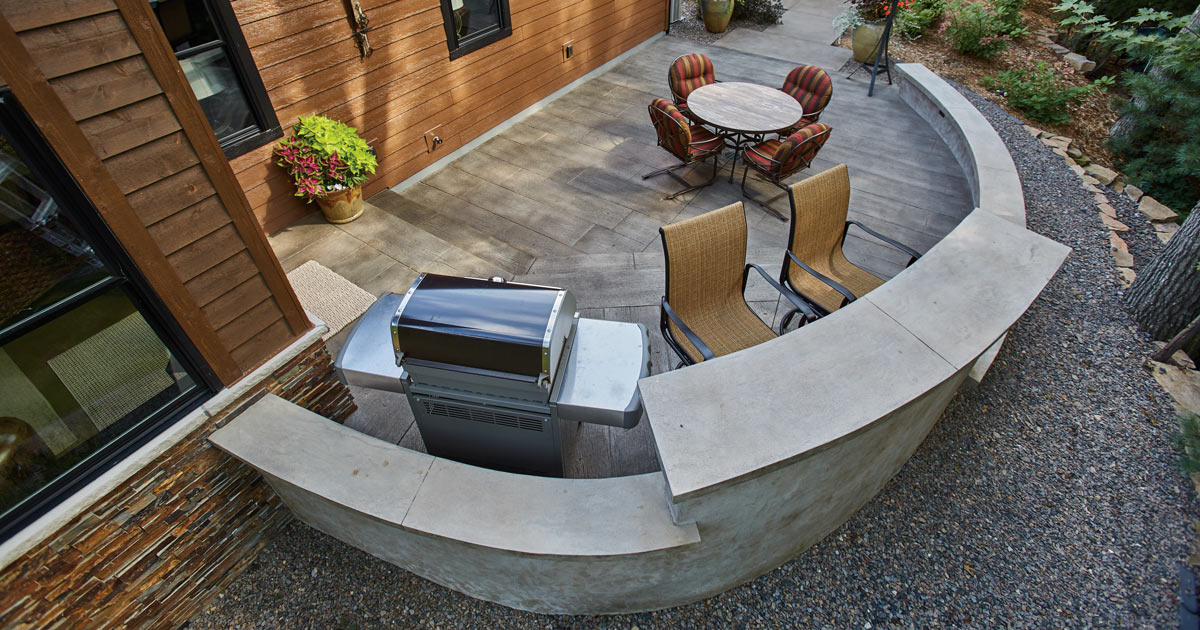Six Steps to Quality
Six Steps to Quality Exterior Concrete
It is often the forgotten investment. Siding gets painted, flooring waxed, and furniture stain proofed. Meanwhile, the concrete driveways, sidewalks, and patios in the northern Midwest are subject to some of the harshest weather conditions. Yet, with a little bit of care, your choice of a concrete driveway will last you decades. The information below on the Six Steps to Quality Concrete is written to help you maximize your return on your wise investment in ready mixed concrete. To view a video on the Six Steps for Proper Concrete Placement, click here.
Hiring a Quality Contractor
A good source for information on contractors may be your local ready mixed concrete producer. A directory of producers may be here. Receive bids from at least three contractors and be sure each bid is based on the same specifications. Also be sure to check references.
The Following Are the Six Requirements for Quality Flatwork
Requirement #1
PROPER SUBGRADE PREPARATION
• Subgrade is the existing soil after the topsoil is removed.
• Any pockets of soft soil that cannot be uniformly compacted must be removed and replaced with suitable material such as compactable gravel.
• Slope the subgrade away from structures 1/4″ per lineal foot to ensure good drainage.
• Never place concrete on frozen or muddy subgrade.
Requirement #2
PROPER SLAB DESIGN
• Use a minimum thickness of 4 inches.
• Control joints should be placed as soon as possible with a minimum depth of 1/4 the slab thickness never less than 1 inch.
• Joints should be spaced 2 to 2 1/2 the thickness of the slab converted to feet (example – 4″x2 1/2 = 10 feet). It should never be more than 15′.
• Aspect ratio should be maximum 1:1.5 (length to width ratio). Make sure to incorporate restraint points into your joint layout.
• As with the subbase, slope the concrete surface 1/4″ per lineal foot.
• Isolation joints are required at existing slabs, structures, and objects. Isolation joints should run the full depth of the slab.
Requirement #3
PROPER CONCRETE MIX DESIGN
The mix must be a maximum water/cementitious ratio of .45 air entrained concrete which would equate to a minimum of 4500 psi meeting the following requirements:
• Air content when placed: 6 percent, plus or minus 1 percent.
• Slump: 4 inches, plus or minus 1 inch.
• Coarse and fine aggregate: shall meet Wisconsin Department of Transportation specifications.
Note: The air content and strength of the mix will be effected by any re-tempering water added at the jobsite.
Requirement #4
PROPER PLACING AND FINISHING
• Place the concrete as near to final position as possible.
• No finishing operations shall be performed when there is excess moisture or bleed water on the surface.
• The only finishing operations required are: screeding or strike-off; bull floating prior to the appearance of any bleed water; a waiting period for the water sheen to disappear; edging and jointing; and a broom texture (the safest and most durable final finish).
• Protection of the concrete from the hot sun, high winds, or freezing temperatures is required until the concrete has a chance to gain adequate strength and cure properly.
• All concrete should be placed within 90 minutes from the time the truck was loaded. Hot-weather practices call for shorter placement time limits.
THE JOB IS NOT FINISHED YET!
REQUIREMENTS #5 AND #6 ARE ESSENTIAL IN CREATING A QUALITY EXTERIOR FLATWORK PROJECT.
Requirement #5
PROPER CURING
• The concrete must be cured immediately after finishing! Curing greatly increases the strength and durability of the concrete surface and its resistance to freezing and thawing as well as deicer salts.
• Curing is a process where a satisfactory moisture content and temperature must be maintained for a period of time.
• There are several methods of curing, however the most common method is the use of high quality spray on curing compound applied at the manufacturer’s recommendation (contact your local ready mix supplier to purchase this product).
• In spring and fall when average temperatures are below 50 degrees, use cold weather concrete practices to maintain temperature and cure the concrete for at least 7 days.
Requirement #6
CONSUMER SEALING & AFTERCARE
• Keep vehicles off of freshly placed concrete for at least 7 days.
• Freshly placed concrete should be sealed after allowing a minimum of 30 days to air dry. Consider resealing aged concrete every several years or as wear in high traffic areas begins to show. Follow manufacturer’s recommendations (contact your local ready mix supplier to purchase this product).
• Sealing is a process where a protective coating or penetrating water repellant material is applied to keep moisture and contaminates out of the concrete.
• The use of down sprouts can help ensure that drain water does NOT undermine the slab which can cause settlement cracks.
• Prevent snow and ice from accumulating on the concrete especially the first winter. Sand can always be used for traction.
• Never use deicers containing fertilizer ingredients such as ammonium sulfate, ammonium nitrate, calcium chloride, and magnesium chloride. These chemicals WILL ATTACK AND DESTROY CONCRETE BY CHEMICAL REACTION. NEVER USE THESE PRODUCTS!





